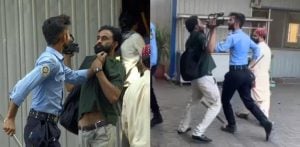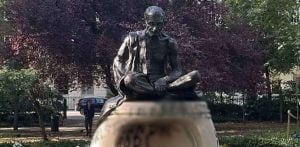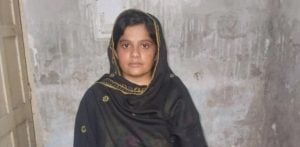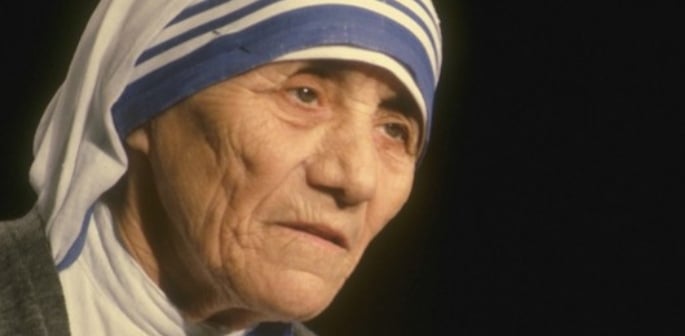Her work continues to inspire millions.
Mother Teresa is a name steeped in India’s cultural history.
An Albanian-Indian nun, she founded the Missionaries of Charity, dedicated to serving and supporting the “poorest of the poor” in Kolkata slums.
After moving to Ireland aged 18, she shifted to India, where she spent most of her life.
Her congregations ultimately operated in over 133 countries, managing homes for sufferers of leprosy, HIV/AIDS, and tuberculosis.
Teresa’s life and societal contributions are the inspiration for books, documentaries, and films.
In this article, DESIblitz explores Mother Teresa’s life and history and what makes her one of the key missionaries in Indian history.
Early Life
 Mother Teresa was born Anjezë Gonxhe Bojaxhiu on August 26, 1910, in Üsküp, Kosovo vilayet, Ottoman Empire.
Mother Teresa was born Anjezë Gonxhe Bojaxhiu on August 26, 1910, in Üsküp, Kosovo vilayet, Ottoman Empire.
Her surname, Gonxhe, translates to “flower bud” in Albanian.
However, she considered the following day as her true birthday, as this was when she was baptised.
The youngest child, Teresa, became interested in missionaries and their work in Bengal at an early age.
This made her realise her ambitions of maintaining service and religion at the age of 12.
On August 15, 1928, this desire was fuelled when Teresa visited the shrine of the Black Madonna, where she often undertook pilgrimages.
Teresa left home when she was 18 years old for Ireland, where she learnt English and intended to become a missionary.
She joined the Sisters of Loreto, and English was their language of instruction in India. After leaving home, Teresa never saw her mother and sister again.
Teresa was considered a dangerous agent of the Vatican and was therefore denied permission to return to her mother and sister.
Mother Teresa arrived in India in 1929 and learned Bengali in Darjeeling.
She opted to be named after the missionary saint Thérèse de Lisieux.
However, because another nun had taken this name, she chose the Spanish spelling, ‘Teresa’.
In 1937, Teresa began teaching at the Loreto convent school in Kolkata (then Calcutta). She worked there for almost 20 years and became its headmistress in 1944.
Teresa became perturbed by the poverty surrounding her, which was worsened by the 1943 Bengal Famine, which resulted in several deaths.
In 1946, Teresa decided to serve the poor communities in India and in 1950, she founded the Missionaries of Charity.
She wore a white cotton saree with two blue borders – a dress code that remains iconic.
Charity & Missionary Work
 Mother Teresa started her missionary work for the poor in 1948, adopting Indian citizenship.
Mother Teresa started her missionary work for the poor in 1948, adopting Indian citizenship.
She received basic medical training in Patna and arrived in the slums of Kolkata.
After founding a school, she began to serve those who were poor and hungry and, in early 1949, was joined by a group of young women in her effort.
Teresa’s work was gradually noticed by Indian officials, including the Prime Minister.
She wrote: “The poverty of the poor must be so hard for them.
“While looking for a home, I walked and walked till my arms and legs ached.
“I thought how much they must ache in body and soul, looking for a home, food and health.”
In the 1950s, Teresa’s missionary and charity work gained momentum when she opened hospices and homes for the diseased and poor.
Her hospice for leprosy sufferers is known as Shanti Nagar, and in 1955, Teresa founded Nirmala Shishu Bhavan, The Children’s Home of the Immaculate Heart.
It is a haven for orphans and homeless young people.
The 1960s and 1970s saw Teresa expand her congregations beyond India’s borders, with hospices, houses, and foundations opening in Venezuela, Rome, Africa, and Austria.
In 1963, Teresa started The Missionaries of Charity Brothers, and in 1981, she founded the Corpus Christi Movement for Priests.
Later Life
 Mother Teresa was fluent in five languages, which comprised Bengali, Albanian, Serbian, English, and Hindi.
Mother Teresa was fluent in five languages, which comprised Bengali, Albanian, Serbian, English, and Hindi.
She used these skills to make trips outside India for humanitarian endeavours.
During the Siege of Beirut in 1982, Teresa rescued 37 children who were trapped in a front-line hospital.
She was accompanied by Red Cross Workers as she travelled through the war zone to the hospital.
In the late 1980s, Teresa expanded her efforts to countries that had previously rejected missionary efforts.
Mother Teresa was controversially opposed to abortion, stating: “[Abortion is] “the greatest destroyer of peace today.
“Because if a mother can kill her own child – what is left for me to kill you and you kill me – there is nothing between.”
Unfazed by criticism, she travelled to Ethiopia to help people suffering from hunger and also helped radiation victims at Chernobyl.
In 1991, after decades away, she returned to Albania and opened a Missionaries of Charity Brothers in Tirana.
Death
Teresa suffered a heart attack in 1983 and a second in 1989. After the latter, she received a pacemaker.
She expressed a desire to resign as Head of the Missionaries of Charity in the early 1990s but agreed to stay after the congregation voted for her to continue.
In April 1996, Teresa broke her collarbone and suffered heart failure and malaria and ultimately resigned on March 13, 1997.
Mother Teresa passed away on September 5, 1997, at the age of 87.
She received a state funeral, and Pakistani Prime Minister Nawaz Sharif said:
“[Teresa is a] rare and unique individual who lived long for higher purposes.
“Her life-long devotion to the care of the poor, the sick, and the disadvantaged was one of the highest examples of service to our humanity.”
A Legend Continues
 Teresa was awarded the Padma Shri in 1962 and the Bharat Ratna in 1980, which is India’s highest civilian honour.
Teresa was awarded the Padma Shri in 1962 and the Bharat Ratna in 1980, which is India’s highest civilian honour.
In honour of her birth centenary in 2010, the Indian government issued a special Rs 5 coin dedicated to Teresa.
By 1996, the Missionaries of Charity operated 517 missions in over 100 countries, with the number of sisters growing to thousands.
In 1979, she was awarded the Nobel Peace Prize but refused the ceremonial banquet.
She asked that its cost be given to poor people in India. At the ceremony, she was asked: “What can we do to promote world peace?”
She replied: “Go home and love your family.”
Teresa added: “When I pick up a person from the street, hungry, I give him a plate of rice, a piece of bread, I have satisfied.
“I have removed that hunger.”
Mother Teresa remains a cultural icon and a beacon of peace, support, and humanitarianism.
Her work continues to inspire millions around the world.
Her death anniversary is observed as her Feast Day, keeping her legacy alive.
In 1962, she was also awarded the Ramon Magsaysay Peace Prize.
These achievements highlight her staggering contributions to society which should be celebrated for years to come.





























































